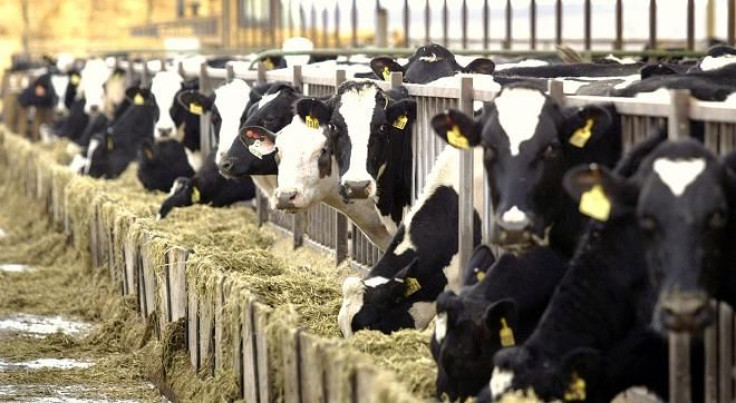Mad Cow Disease Found in U.S., Poses No Risk to Humans, Gov't

Health officials announced that a California dairy cow tested positive for mad cow disease, according to a statement released by the U.S. Department of Agriculture on Tuesday.
The confirmed case was the fourth time the deadly disease has been detected in U.S. cattle, and the first new detected case in the country since 2006.
Mad cow disease or bovine spongiform encephalopathy (BSE) is a transmissible, incurable, fatal brain disease of cattle that can spread to people who eat infected animals.
However, the infected California dairy cow posed "no risk to the food supply or to human health," USDA Chief Veterinary Officer John Clifford said in a news release.
“It was never presented for slaughter for human consumption, so at no time presented a risk to the food supply or human health,” said Clifford. “Additionally, milk does not transmit BSE.”
U.S. Agriculture Secretary Tom Vilsack said that the American food supply is safe and that the USDA is confident about the health of U.S. cattle.
“The systems and safeguards in place to protect animal and human health worked as planned to identify this case quickly, and will ensure that it presents no risk to the food supply or to human health. USDA has no reason to believe that any other U.S. animals are currently affected, but we will remain vigilant and committed to the safeguards in place," Vilsack said in a statement.
Health officials said that the remains of the infected cow is currently being held by California authorities and will be destroyed.
Global efforts to curb BSE have been successful, according to health officials. There were only 29 worldwide cases of the disease in 2011, compared to 37,311 cases in 1992.
The Associated Press reported that the discovery of the infected cow was a "stroke of luck” because the USDZ testing program only tests a small portion of dead animals, at around 40,000 cows, a year for BSE.
The infected cow had not showed outward signs of the disease before it died, which for affected cattle include nervousness or aggression, abnormal posture, lack of coordination, decreased milk production and loss of body weight despite continued appetite.
Cattle and other grazing animals contract BSE and similar diseases by eating feed made with meat from other grazing animals that contain proteins called prions, which trigger a chain reaction in the nervous system leading to brain damage and death.
Federal agriculture officials stressed that this particular case was an "atypical" form of mad cow disease that was not caused from the cow eating infected cattle feed.
“Samples from the animal in question were tested at USDA's National Veterinary Services Laboratories in Ames, Iowa. Confirmatory results using immunohistochemistry and western blot tests confirmed the animal was positive for atypical BSE, a very rare form of the disease not generally associated with an animal consuming infected feed,” Clifford said in a news release.
Bruce Akey, director of the New York State Veterinary Diagnostic Laboratory at Cornell University, told AP that the newest case of BSE was “just a random mutation that can happen every once in a great while in an animal," and that random mutations happen in nature all the time.
"Are you worried about all of the meteors that passed the earth last night while you were sleeping? Of course not," Mad cow disease expert James Culler, director of the UC Davis Dairy Food Safety Laboratory in California, told the Associated Press. "Would you pay 90 percent of your salaries to set up all of the observatories on earth to watch for them? Of course not. It's the same thing."



























